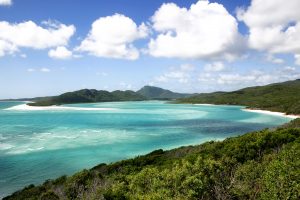The opening of the Three Capes Track is wonderful news for Tasmania and a fantastic example of how we can motivate more travellers to check out natural Australia.
Many country Australian’s instinctively appreciate the charm of rural and regional Australia. Tourism provides a considerable opportunity for bringing these locations to life and is an essential source of employment.
Tourism is thriving and it’s one of 5 crucial markets that will drive the economy following the decline of the mining boom. Growth in tourism is predicted to continue at 4.1 per-cent over the next decade, well ahead of Australia’s overall financial growth rate. Tourism supports nearly 1 million jobs and 90 per-cent are filled by Australians.
While tourism is thriving, it’s not evenly spread out. The eastern states are reaping most of the rewards while South Australia, Western Australia and the Northern Area are treading water. The story is very similar for rural and regional Australia, which is worrying.
Experiencing remote and magnificent natural attractions is often restricted to those ready to bring a camping tent. While this is a great experience, the building of tracks providing quality, eco-friendly cottages open these areas to a larger number of travellers, as the globally recognised Milford Track in New Zealand proves. This corner of New Zealand is prospering, nearby towns are very busy, their hotels reserved, yet it’s one of the most remote areas on earth.
Australia has world-class natural destinations too, however, we have to make sure more people in the world know about them and want to see them. Connectivity and air travel capability are absolutely crucial to accessibility. Especially for Australia’s prospering wine market, with regions including yarra valley wine establishments and the world famous wineries in the Adelaide hills and the Barossa Valley who rely on tourists to travel. Then think through tourism infrastructure, visa reform, workforce capacity and marketing. We must start thinking about the overall visitor experience from boarding their plane, ship or automobile, to the end location.
Australia is an aspirational location for global visitors. Australia’s natural surroundings, wild animals and diverse coastal experiences attract savvy visitors who are looking to not just visit the most popular attractions, but to have distinct and remarkable experiences that are the envy of their family and friends back home. Many want to experience the corners of the earth, but they don’t wish to rough it.
In 2014-15 nature-based visitors spent $49 billion and the essential attractions are discovered in our regions. We should make sure these sites are known to prospective visitors prior to their visit to Australia. We need to revitalize our offering and supply high-end experiences, such as the 3 Capes Track.
Chinese consumers rate world-class beauty and natural environments as the important element when planning a vacation. Last year 100 million Chinese visitors went on an international vacation, and by 2020 this is set to double. This provides a terrific opportunity for Australia if we can cater for the need.
Targeted worldwide marketing is important and the Restaurant Australia campaign shows why. Our credibility for quality, safe food is a huge advantage over our competitors and many of these experiences are in rural and regional locations with many top class winery restaurants yarra valley in Victoria, for instance. Research showed global visitors did not rate Australia as a food and wine location before they arrived, but rated it highly when they had. This campaign addressed the inconsistency – significantly increasing spending on food and wine by almost $700 million a year and enhancing the perception of our offering.
Tourism Australia’s upcoming Coastal and Aquatic campaign will build on another strength. All of us understand how great our coastal and aquatic experiences are however research has discovered a 10 per-cent decline in Google keyword search for “Australian beaches” and the “Excellent Barrier Reef”. A few of Australia’s best seaside and aquatic experiences are discovered in rural and regional Australia so this will be another excellent chance.
For the very first time because 2010 we are on track to reach our Tourism 2020 target to increase overnight expenses to between $115bn and $140bn, with overnight visitor expenditure reaching a record $88.8 bn last financial year.
With a sensible Australian dollar driving growth, we prepare to capitalise on the effort of the market to make sure the development continues. Our amazing local environments are a key advantage and it is important they share in the success of our tourism market.
